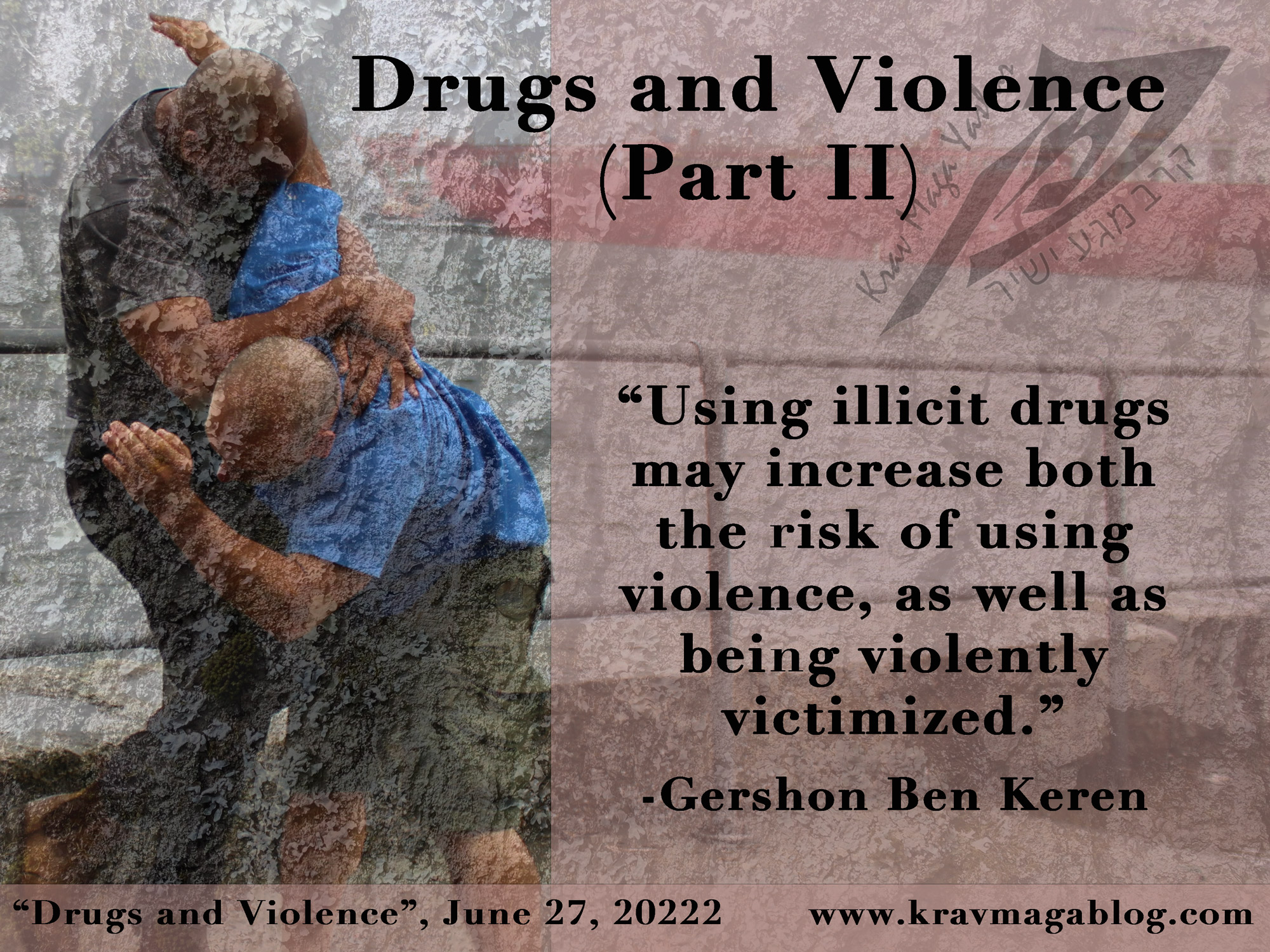Goldstein (1990), concluded that illicit drug use contributed to violence in three ways: psychopharmacologically, economically and systemically. From a psychopharmacological perspective there are certain drugs that cause mood swings, lower inhibitions, and increase aggression etc., which can/may result in violent offending e.g., a person who may not have otherwise engaged in an act of violence, but due to consumption of an illicit drug, reacts violently to a benign threat due to a state of heightened anxiety etc. Illicit drugs also contribute to violence economically; a user may engage in violent street robberies in order to finance their habit. Simply being an illicit drug user, and operating in that environment exposes users to a potentially violent criminal underclass (and system), in terms of mixing with dealers, and other possibly desperate users, who are prepared to use violence to meet their personal needs etc. Several studies have shown that a leading cause of death amongst users of illicit drugs is homicide – some studies have shown that this is more significant than overdoses; this is changing somewhat with drugs such as fentanyl, and synthetic opioids where the risk of overdosing is extremely high (in 2020 synthetic opioids were responsible for 82% of all opioid-involved deaths). Using illicit drugs may increase both the risk of using violence, as well as being violently victimized. In this article I want to examine the first two contributions to violent offending that Goldstein identifies i.e., the psychopharmacological effects of drugs and violence, and the ways in which the economic needs of the user contribute to violence, as these have the potential to affect those who don’t take/use illicit drugs.
Before we begin looking at the psychopharmacological effect of illicit drugs and their relationship with violent offending, it is worth noting that there is a much stronger relationship between alcohol, violence, and non-violent crimes. Many non-violent offenders such as burglars use alcohol to lower inhibitions and increase confidence before breaking into a property, and if we look at social violence that may be committed by individuals who otherwise are law-abiding citizens, those incidents largely take place in establishments where drinking is prohibited/encouraged such as bars, pubs, and clubs etc. Alcohol abuse and heavy drinking is also a significant risk-factor, in incidents of Intimate Partner Violence. It can be difficult to determine the exact causal relationship between illicit drug-use and violence, as each individual user may have risk-factors that are unique to them, such as poor social control, a propensity to anger etc., which play a greater part in their violent offending than the drug itself. The lifestyle of those who use illicit drugs is also a significant factor, that can cloud the pharmacological impact that drugs have on violence e.g., recent research is showing a correlation between marijuana use and violent offending; what is not yet apparent is whether marijuana causes aggression at certain dosages or whether offenders who are prone to using violence are starting to use the drug as part of their lifestyle etc. Those psychoactive drugs which do seem to have a causal effect and increase the risk of violence amongst those who may not normally behave aggressively, are stimulants such as amphetamines and cocaine. However, both amphetamines and cocaine are illicit drugs which are often taken recreationally by a large number of people, and so in one sense may be statistically over-represented, and their effects on violence exaggerated.
The second reason that illicit drugs may increase the risk of violence, is due to economic reasons i.e., the need to acquire money to buy them. This is going to be less true of recreational users, who may be able to acquire the funds to support their use through legitimate means e.g., the city banker, or finance professional who works legitimately during the week, and buys what they need for the weekend etc. There are of course those violent offenders who engage in robberies and muggings etc., to fund a certain lifestyle, which involves partying and illicit drug use. When we look at the links between street robberies and drugs, it is these individuals who tend to provide the connection rather than the “full-time” addict – these individuals are more likely to engage in property crimes and thefts to support their habit e.g., breaking into homes and raiding the medicine cabinet, or committing crimes such as shoplifting, and stealing from one another etc. To commit a street robbery means having the social skills and confidence to interact with regular members of society, those who have removed themselves from this due to addictions, often have difficulty communicating with those who live regular lives etc. This is not the case with those who live a criminal lifestyle, that involves partying and illicit drug use, as they are used to interacting socially with a greater variety of people.
Whilst there is certainly a connection between illicit drug use and violence it is still not clear to what degree various factors play a part e.g., just as not everybody becomes violent when they consume alcohol, the same is true of illicit drug consumption, and it may be that both amplify existing aggressive tendencies and behaviors etc. It could be that certain lifestyles that are inherently violent also involve the use of illicit drugs etc., and this is where we may see a link between marijuana use and violence, and here like all substances potency and level of consumption play a part e.g., not everybody is going to get stoned and/or inebriated to the point where they are incapable of committing an offense.
Share:

Gershon Ben Keren
2.8K FollowersGershon Ben Keren, is a criminologist, security consultant and Krav Maga Instructor (5th Degree Black Belt) who completed his instructor training in Israel. He has written three books on Krav Maga and was a 2010 inductee into the Museum of Israeli Martial Arts.
Click here to learn more.

